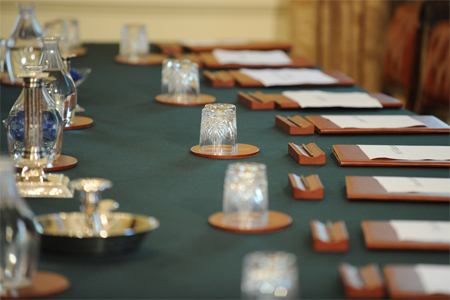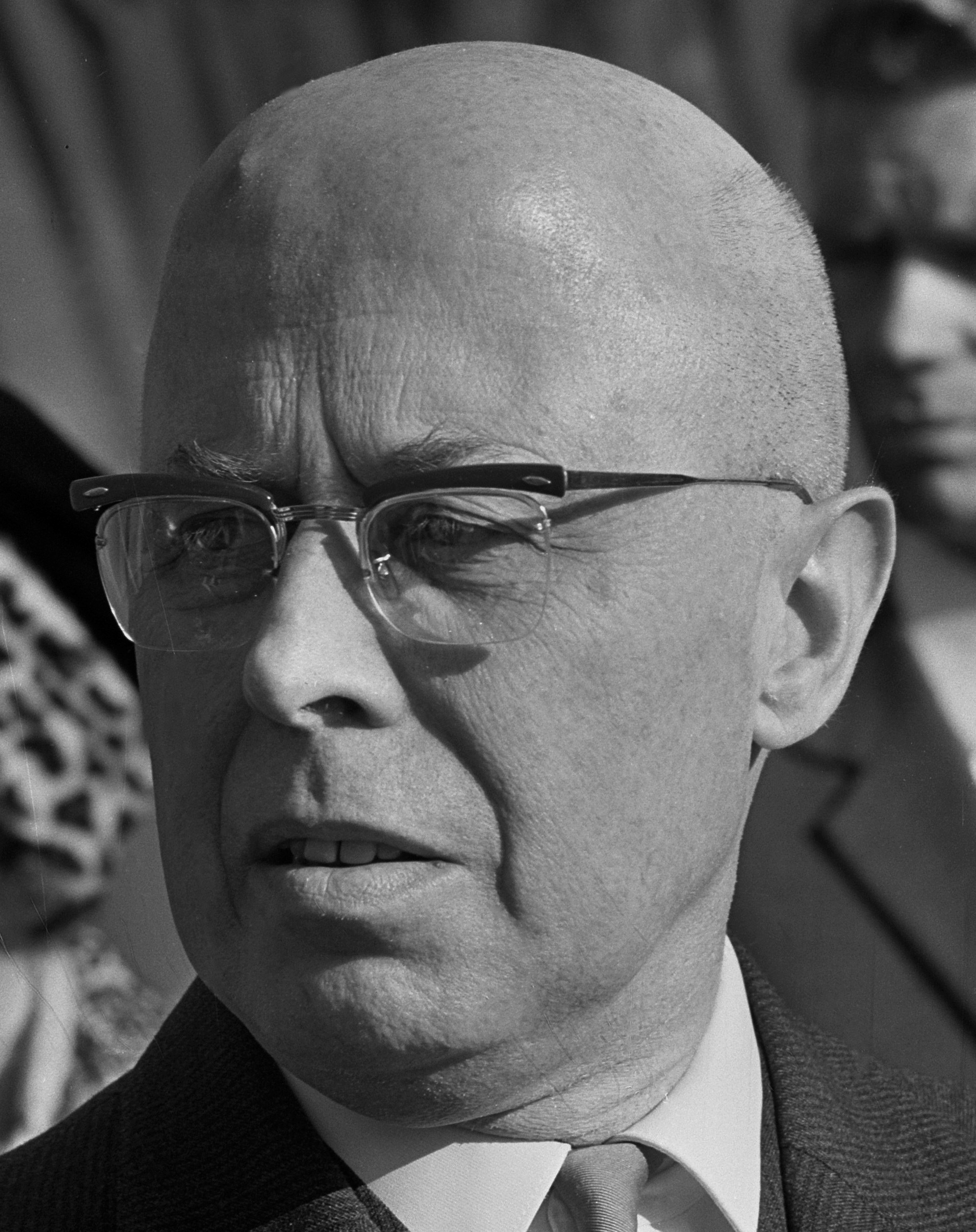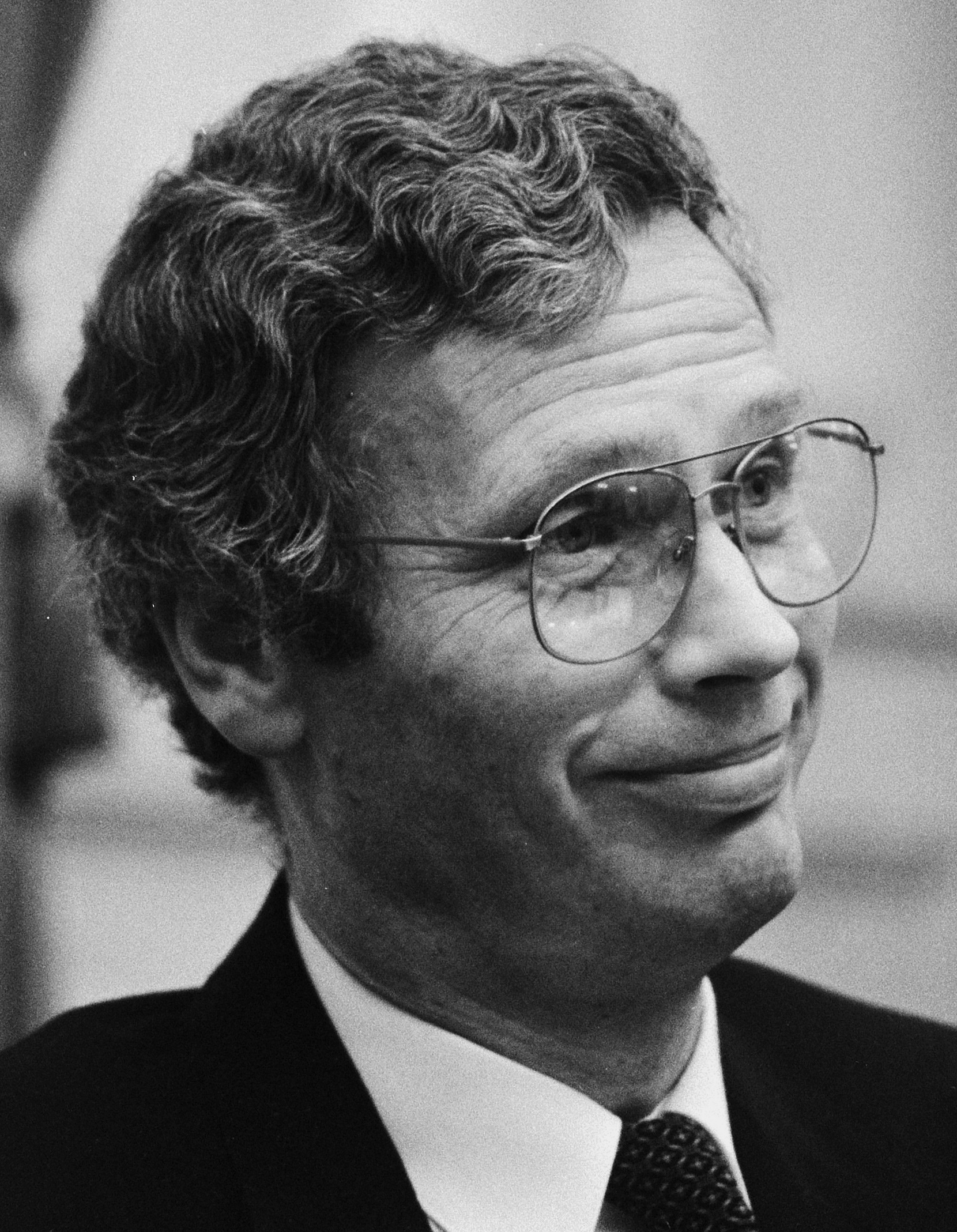|
Rump Cabinet
A rump cabinet is a Cabinet (government), cabinet from which one or more Coalition government, coalition partners have withdrawn and which has minority support in parliament. Netherlands In the Kingdom of the Netherlands, Netherlands a rump cabinet is not the same as a demissionary cabinet where the entire Cabinet of the Netherlands, cabinet resigns and the full existing coalition runs the country until a new cabinet takes power after elections have been held. With a demissionary cabinet Parliament of the Netherlands, parliament decides which issues are controversial, which bars the cabinet from drafting legislation concerning them. A rump cabinet can take care of such issues but it does not have a majority in parliament and thus needs approval by opposition parties, which make it likely that the rump parliament will take great care dealing with controversial issues. Generally the rump cabinet will only take care of going government concerns (as a Caretaker government, caretaker ... [...More Info...] [...Related Items...] OR: [Wikipedia] [Google] [Baidu] [Amazon] |
Cabinet (government)
A cabinet in governing is a group of people with the constitutional or legal task to rule a country or state, or advise a head of state, usually from the executive branch. Their members are known as ministers and secretaries and they are often appointed by either heads of state or government. Cabinets are typically the body responsible for the day-to-day management of the government and response to sudden events, whereas the legislative and judicial branches work in a measured pace, in sessions according to lengthy procedures. The function of a cabinet varies: in some countries, it is a collegiate decision-making body with collective responsibility, while in others it may function either as a purely advisory body or an assisting institution to a decision-making head of state or head of government. In some countries, particularly those that use a parliamentary system (e.g., the United Kingdom), the cabinet collectively decides the government's direction, especially in ... [...More Info...] [...Related Items...] OR: [Wikipedia] [Google] [Baidu] [Amazon] |
Second Drees Cabinet
The Second Drees Cabinet of the Netherlands, cabinet, also called the Third Drees cabinet was the Executive (government), executive branch of the Politics of the Netherlands, Dutch Government from 2 September 1952 until 13 October 1956. The cabinet was formed by the Social democracy, social-democratic Labour Party (Netherlands), Labour Party (PvdA) and the Christian democracy, Christian-democratic Catholic People's Party (KVP), Anti-Revolutionary Party (ARP) and Christian Historical Union (CHU) after the 1952 Dutch general election, election of 1952. The cabinet was a Centre-left grand coalition and had a majority government, majority in the House of Representatives (Netherlands), House of Representatives with Leader of the Labour Party (Netherlands), Labour Leader Willem Drees serving as Prime Minister of the Netherlands, Prime Minister. Former Roman Catholic State Party, Catholic Prime Minister Louis Beel served as Deputy Prime Minister of the Netherlands, Deputy Prime Minister ... [...More Info...] [...Related Items...] OR: [Wikipedia] [Google] [Baidu] [Amazon] |
Democrats 66
Democrats 66 (; D66) is a social liberal and progressive political party in the Netherlands, which is positioned on the centre to centre-left of the political spectrum. It is a member of the Liberal International (LI) and the Alliance of Liberals and Democrats for Europe (ALDE). The name of the party refers to its year of foundation, 1966. Initially, its main objective had been to democratise the Dutch political system, but it developed a broader social liberal ideology over time. In the 1967 general election, the party won 7 out of 150 seats in the House of Representatives. No new party had ever gained that many seats before. The party was in government from 1973 to 1977, 1981 to 1982, 1994 to 2002, 2003 to 2006 and 2017 to 2024. It currently holds nine seats in the House of Representatives, five seats in the Senate and three seats in the European Parliament. D66 is especially popular among people who hold a university degree, and its voters are mostly concentrated i ... [...More Info...] [...Related Items...] OR: [Wikipedia] [Google] [Baidu] [Amazon] |
Third Balkenende Cabinet
The third Balkenende cabinet was the executive branch of the Government of the Netherlands from 7 July 2006 until 22 February 2007. The cabinet was formed by the Christian-democratic Christian Democratic Appeal (CDA) and the conservative-liberal People's Party for Freedom and Democracy (VVD) after the fall of the second Balkenende cabinet. The caretaker rump cabinet was a centre-right coalition and had a minority in the House of Representatives with Christian Democratic Leader Jan Peter Balkenende serving as Prime Minister. Former Liberal Leader Gerrit Zalm continued as Deputy Prime Minister and Minister of Finance. The cabinet served during the middle years of unstable 2000s. Domestically, its primary objective was to make preparations for a snap election in 2006, but immigration was also a major point of attention. Internationally, it had to deal with the war on terror and the government support for the Iraq War. The cabinet suffered several major internal and externa ... [...More Info...] [...Related Items...] OR: [Wikipedia] [Google] [Baidu] [Amazon] |
Labour Party (Netherlands)
The Labour Party ( , PvdA or P van de A ) is a social democratic political party in the Netherlands. The party was founded in 1946 as a merger of the Social Democratic Workers' Party, the Free-thinking Democratic League and the Christian Democratic Union. Prime Ministers from the Labour Party have been Willem Drees (1948–1958), Joop den Uyl (1973–1977) and Wim Kok (1994–2002). From 2012 to 2017, the PvdA formed the second-largest party in parliament and was the secondary partner in the Second Rutte cabinet with the People's Party for Freedom and Democracy. The party fell to nine seats in the House of Representatives at the 2017 general election, making it the seventh-largest faction in the chamber—its worst showing ever. However, the party rebounded with a first-place finish in the 2019 European Parliament election in the Netherlands, winning six of 26 seats, with 19% of the vote. The party is a member of the European Party of European Socialists and the ... [...More Info...] [...Related Items...] OR: [Wikipedia] [Google] [Baidu] [Amazon] |
Third Van Agt Cabinet
The third Van Agt cabinet of the Netherlands, cabinet was the Executive (government), executive branch of the Politics of the Netherlands, Dutch Government from 29 May 1982 until 4 November 1982. The cabinet was formed by the Christian democracy, Christian-democratic Christian Democratic Appeal (CDA) and the Social liberalism, social-liberal Democrats 66 (D'66) after the fall of the previous Second Van Agt cabinet, Cabinet Van Agt II. The Caretaker government, caretaker rump cabinet was a Centrism, centrist coalition and had a Minority government, minority in the House of Representatives (Netherlands), House of Representatives with Leader of the Christian Democratic Appeal, Christian Democratic Leader Dries van Agt continuing as Prime Minister of the Netherlands, Prime Minister and dual served as List of Ministers of Foreign Affairs of the Netherlands, Minister of Foreign Affairs. Leader of the Democrats 66, Progressive-Liberal Leader Jan Terlouw continued as Deputy Prime Ministe ... [...More Info...] [...Related Items...] OR: [Wikipedia] [Google] [Baidu] [Amazon] |
Democratic Socialists '70
The Democratic Socialists '70 (, DS'70) was a social democratic political party in the Netherlands. History DS'70 was founded on 4 April 1970 as the result of a split from the Labour Party (Netherlands), Labour Party (PvdA). In June 1970, Frans Goedhart and Wybrand Schuitemaker, two members of the House of Representatives (Netherlands), House of Representatives, left the PvdA and became members of DS'70 because of the anti-Americanism, anti-American position the PvdA had taken in the Vietnam War. They had previously been frustrated by its cooperation with other left-wing politics, left-wing parties such as the Pacifist Socialist Party and its left-wing fiscal policy. In its declaration of principles (''Beginselverklaring''), DS'70 argued that whilst the People's Party for Freedom and Democracy (VVD) lacked the comprehension of the necessity of social and economic reforms, the PvdA had acquired "anarchist" and unrealistic pacifism, pacifist aspirations. In the 1971 Dutch general e ... [...More Info...] [...Related Items...] OR: [Wikipedia] [Google] [Baidu] [Amazon] |
Second Biesheuvel Cabinet
The second Biesheuvel cabinet was the executive branch of the Dutch Government from 9 August 1972 until 11 May 1973. The cabinet was formed by the christian-democratic Catholic People's Party (KVP), Anti-Revolutionary Party (ARP) and Christian Historical Union (CHU) and the conservative-liberal People's Party for Freedom and Democracy (VVD) after the fall of the previous Cabinet Biesheuvel I. The cabinet was a centre-right caretaker government and had a minority in the House of Representatives. Protestant Leader Barend Biesheuvel of the Anti-Revolutionary Party served as Prime Minister. Prominent Catholic politician Roelof Nelissen served as Deputy Prime Minister and Minister of Finance and former Liberal Leader Molly Geertsema served as Deputy Prime Minister and Minister of the Interior. The rump cabinet served until the election of 1972. Formation Following the fall of the First Biesheuvel cabinet the Democratic Socialists '70 (DS'70) left the coalition and the Catholic ... [...More Info...] [...Related Items...] OR: [Wikipedia] [Google] [Baidu] [Amazon] |
Cals Cabinet
The Cals cabinet was the Executive (government), executive branch of the Politics of the Netherlands, Dutch Government from 14 April 1965 until 22 November 1966. The cabinet was formed by the Christian democracy, christian-democratic Catholic People's Party (KVP) and Anti-Revolutionary Party (ARP) and the Social democracy, social-democratic Labour Party (Netherlands), Labour Party (PvdA) after the fall of the previous Marijnen cabinet, Cabinet Marijnen. The cabinet was a Centre-left coalition and had a substantial majority government, majority in the House of Representatives (Netherlands), House of Representatives; prominent Catholic People's Party, Catholic politician Jo Cals, a former Minister of Education, served as Prime Minister of the Netherlands, Prime Minister. Leader of the Labour Party (Netherlands), Labour Leader Anne Vondeling served as Deputy Prime Minister of the Netherlands, Deputy Prime Minister and List of Ministers of Finance of the Netherlands, Minister of Fi ... [...More Info...] [...Related Items...] OR: [Wikipedia] [Google] [Baidu] [Amazon] |
Zijlstra Cabinet
The Zijlstra cabinet was the Executive (government), executive branch of the Politics of the Netherlands, Dutch Government from 22 November 1966 until 5 April 1967. The cabinet was formed by the Christian democracy, christian-democratic Catholic People's Party (KVP) and the Anti-Revolutionary Party (ARP) after the fall of the previous Cals cabinet, Cabinet Cals. The Caretaker government, caretaker rump cabinet was a Centrism, centrist coalition and had a Minority government, minority in the House of Representatives (Netherlands), House of Representatives with former Anti-Revolutionary Party#Leadership, Protestant Leader Jelle Zijlstra a former Minister of Finance serving as Prime Minister of the Netherlands, Prime Minister and dual served as List of Ministers of Finance of the Netherlands, Minister of Finance. Former Catholic People's Party, Catholic Prime Minister Jan de Quay served as Deputy Prime Minister of the Netherlands, Deputy Prime Minister and List of Ministers of Infra ... [...More Info...] [...Related Items...] OR: [Wikipedia] [Google] [Baidu] [Amazon] |
Second Beel Cabinet
The second Beel cabinet was the executive branch of the Dutch Government from 22 December 1958 until 19 May 1959. The cabinet was formed by the Christian-democratic Catholic People's Party (KVP), Anti-Revolutionary Party (ARP), and the Christian Historical Union (CHU) after the fall of the previous Third Drees cabinet. The caretaker cabinet was a centre-right coalition and had a slim majority in the House of Representatives with former Catholic Prime Minister Louis Beel returning as Prime Minister and dual served as Minister of Social Affairs and Health. Prominent Catholic politician Teun Struycken continued as Deputy Prime Minister and Minister of the Interior, Property and Public Organisations from previous cabinet and dual served as Minister of Justice. The cabinet served during final years of the turbulent 1950s. Domestically its primary objective was to make preparations for a snap election in 1959. Following the election the cabinet continued in a demissionary capacity ... [...More Info...] [...Related Items...] OR: [Wikipedia] [Google] [Baidu] [Amazon] |
Coalition Government
A coalition government, or coalition cabinet, is a government by political parties that enter into a power-sharing arrangement of the executive. Coalition governments usually occur when no single party has achieved an absolute majority after an election. A party not having majority is common under proportional representation, but not in nations with majoritarian electoral systems. There are different forms of coalition governments, minority coalitions and surplus majority coalition governments. A surplus majority coalition government controls more than the absolute majority of seats in parliament necessary to have a majority in the government, whereas minority coalition governments do not hold the majority of legislative seats. A coalition government may also be created in a time of national difficulty or crisis (for example, during wartime or economic crisis) to give a government the high degree of perceived political legitimacy or collective identity, it can also play a ro ... [...More Info...] [...Related Items...] OR: [Wikipedia] [Google] [Baidu] [Amazon] |










